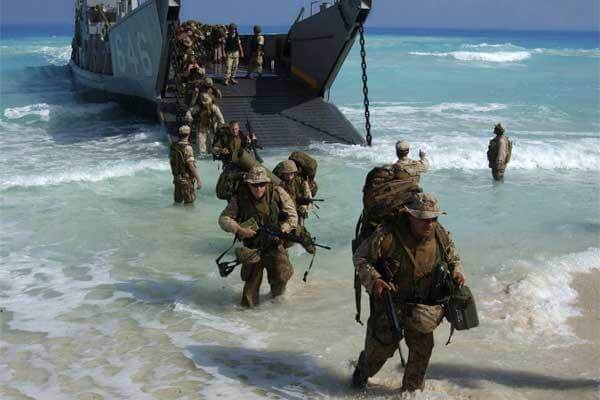The Marine Corps will roll out a brand-new version of its 21st century warfighting strategy in May, the commanding general of Marine Corps Combat Development Command said this week.
The Corps will debut a refreshed edition of Expeditionary Force 21 at the massive Sea Air Space symposium near Washington, D.C., Lt. Gen. Robert Walsh said, allowing troops to get a glimpse of what lies in store for Marine Corps operations. The symposium kicks off May 16.
First published in early 2014, the 47-page EF-21 document drew a roadmap for the Marine Corps into the 2020s, emphasizing smaller units operating independently and a return to sea-based operations. But Walsh told Military.com the document may have focused too much on the non-combat elements of the Corps' global role.
"I think the original writing, in a lot of ways we got a lot of comments back that it made it look like we were doing distributed operations to do theater security cooperation, to touch more countries, train with more people, more in that sense. That's exactly opposite of what we originally intended," Walsh said. " ... Some of it works in a non-hostile environment, to do [humanitarian assistance and disaster relief], that sort of thing. But I also think what we're seeing is, how we're going to operate on a future modern battlefield is to be able to disaggregate."
He likened the Marine Corps' new approach to an amphibious version of the Navy's "distributed lethality" concept, with deployed ships spread out across one or more areas of operations, instead of grouped closely together. The ships can then move back in close in the event of a large-scale fight.
"I think that's the piece that we're really looking at," Walsh said. "We see that, we'll cover more battlespace, we'll bring more capabilities to bear quickly, and we've got to be able to aggregate when we need to."
Like the original EF-21 document, the refresh will focus on company-sized Marine units operating with limited oversight, conducting amphibious landings in contested environments, and maneuvering through complex operating environments.
Walsh said the document will detail plans to develop the Corps' distributed logistics operations, precision fires, command and control, and maneuver capability to support these nimble units.
Incorporation of new and developing technology is also key to the future strategy. Information reviewed by Military.com indicated that the EF-21 refresh will discuss new ways to use autonomous technology and "human-machine combat teaming" with unmanned aerial vehicles to increase the power and ability of the warfighter.
This summer, these concepts will be on display as Marine units participate in the massive Rim of the Pacific joint exercise, Walsh said.
During the exercise, he said, a Marine unit will "deploy" from Camp Pendleton, California, to Marine Corps Air Ground Combat Center -- Twentynine Palms, to demonstrate a mock battle against an opposing force armed with cutting-edge technology.
"They'll have robotics, both ground and air capability. They'll have drone capabilities that can sense, locate, lase, and also acquire weapons," Walsh said. "How we use that, how we operate against that. The first Marine in the door is probably going to be a robotic [device] doing the breaching operations."
-- Hope Hodge Seck can be reached at hope.seck@monster.com. Follow her on Twitter at @HopeSeck.
Related Video:
Semper Fi Always Faithful






























